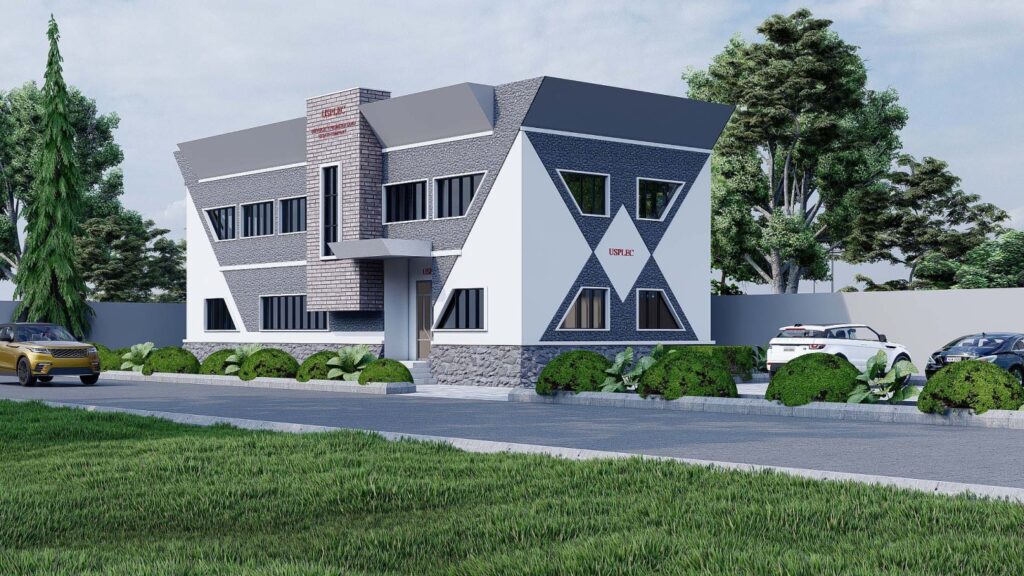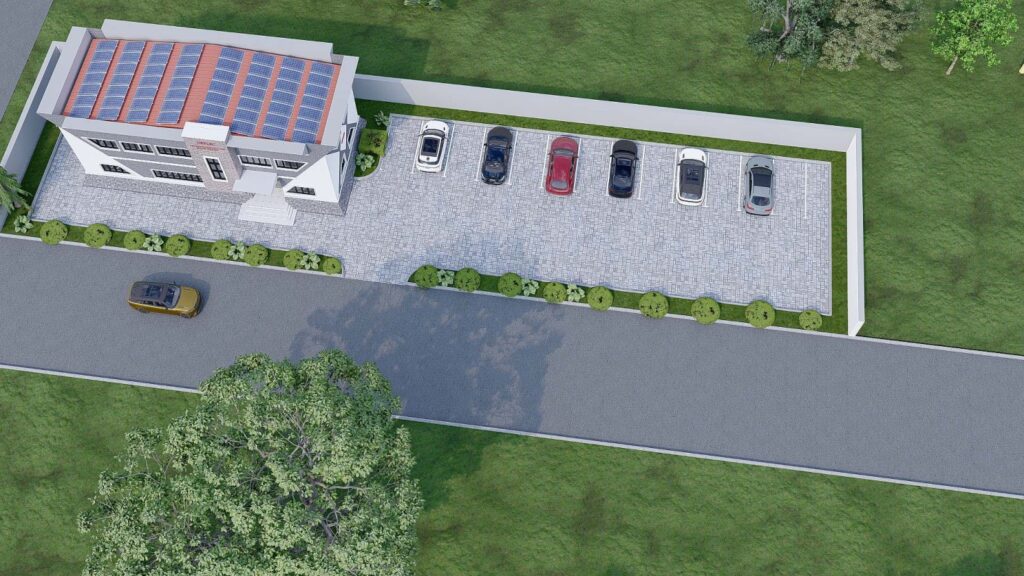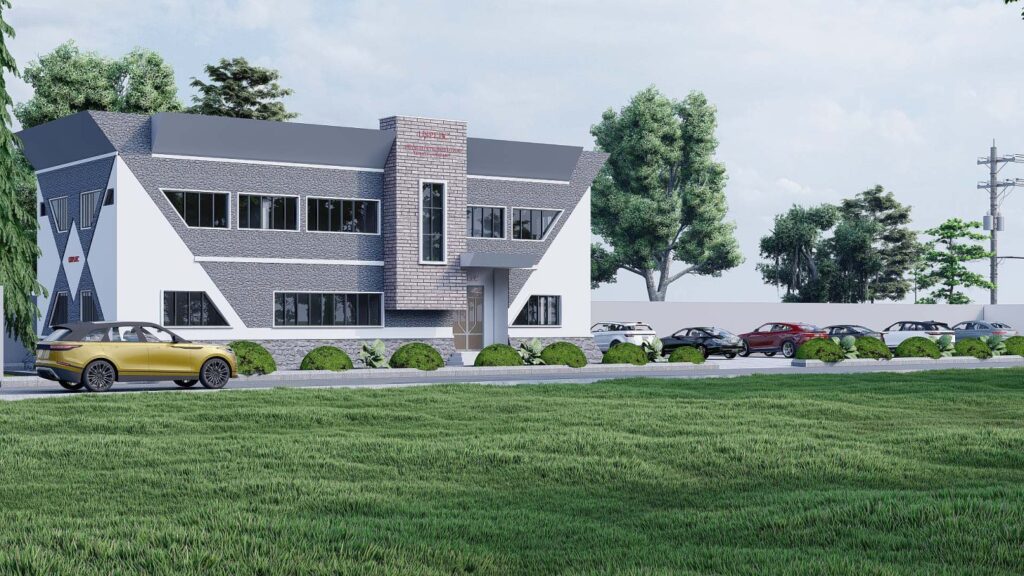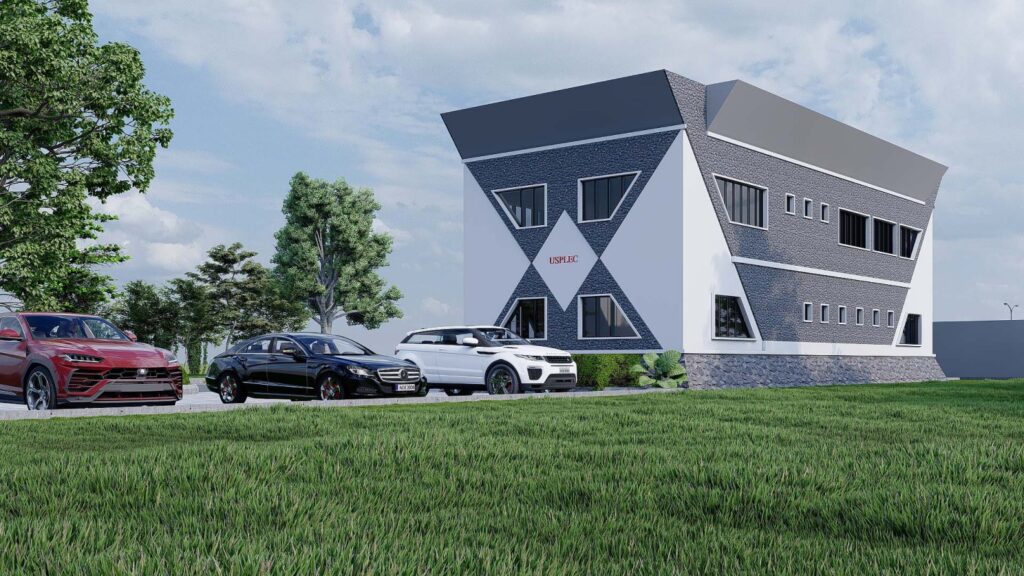Building a Greener Future: USPLEC's Visionary Net Zero Energy Project Office
The University Staff Promised Land Estate Company (USPLEC) is embarking on an innovative architectural journey with the design of its project office. With a vision to create a functional green building, the project office is set to serve as the heart of their ambitious housing estate development located at Nkwere-Inyi, Enugu State Nigeria. Embracing sustainable principles, the architectural design incorporates cutting-edge features, including solar energy, LED lighting, inverter air conditioning units, rainwater collection and recycling systems, and more. This article explores how USPLEC’s project office is a beacon of sustainability and a model for future green developments.
Driving Sustainable Innovation: At the heart of this groundbreaking project is TheSheltaGroup, a team of passionate professionals dedicated to sustainable design and construction practices. Their expertise and commitment to environmental responsibility have been instrumental in shaping the visionary design of the Net Zero Energy Project Office. With a focus on green technologies and innovative approaches, TheSheltaGroup has been the driving force behind this sustainable initiative.
This article explores how USPLEC’s project office is a beacon of sustainability and a model for future green developments in the upcoming estate and beyond.

Passive Solar Design:
At the core of USPLEC’s commitment to sustainability is the implementation of passive solar design principles. Thoughtful placement of windows and shading devices allows natural sunlight to illuminate the building’s interior while facilitating natural ventilation. By harnessing the sun’s energy for lighting and temperature regulation, the project office reduces its reliance on artificial lighting and cooling, resulting in a significant reduction in energy consumption.
Renewable Energy:
At the forefront of USPLEC’s sustainability initiatives is the incorporation of solar energy as the primary power source for the project office. Solar panels will be strategically placed on the building’s roof, harnessing the abundant energy from the sun. This innovative approach ensures a continuous and renewable energy supply, reducing the project office’s reliance on conventional power sources. By leveraging solar energy, USPLEC sets a precedent for eco-friendly practices in the construction industry.

USPLEC’s project office boasts renewable energy storage systems, including batteries, which store excess solar energy generated during peak production periods. This stored energy is then used during low-sunlight hours, ensuring a consistent power supply from renewable sources.
Energy-Efficient Appliances:
USPLEC has equipped the project office’s facilities with state-of-the-art, energy-efficient appliances. Energy-star rated refrigerators, air conditioners, and water heaters ensure minimal energy wastage while maintaining peak functionality. This move not only aligns with sustainability goals but also contributes to long-term operational cost savings.
In a tropical climate, cooling systems can be a major energy drain. However, USPLEC has tackled this challenge by installing inverter air conditioning units. These state-of-the-art systems adjust their cooling output based on the room’s temperature, avoiding unnecessary energy consumption. This smart approach to air conditioning not only ensures a comfortable working environment for staff but also significantly reduces the project office’s overall energy consumption.
In line with their commitment to energy efficiency, USPLEC has opted for LED lighting throughout the project office. LED lighting not only consumes significantly less energy compared to traditional lighting options but also boasts a longer lifespan, reducing maintenance costs. The result is a well-lit and eco-conscious workspace that promotes productivity while minimizing the building’s overall energy footprint.

Smart Building Automation
Smart building automation systems have been thoughtfully integrated throughout the project office. These systems adjust energy use, lighting, and cooling based on occupancy and natural lighting levels. Smart sensors and controls ensure the building operates optimally, minimizing energy waste and maximizing occupant comfort.
Rainwater Collection and Recycling:
A sophisticated rainwater collection and recycling system have been seamlessly incorporated into the project office. Rainwater runoff from the roof is directed to storage tanks where it undergoes careful treatment and purification. This recycled water is then utilized for flushing toilets and watering the office’s landscaped gardens. By reducing reliance on potable water for non-potable purposes, USPLEC demonstrates its dedication to water conservation and environmental stewardship.
Sustainable Materials:
The project office’s construction embraces sustainable materials with a low environmental impact. USPLEC prioritizes the use of locally sourced materials to make the building embody USPLEC’s commitment to eco-friendly construction practices.

A Functional and Eco-Conscious Interior:
The project office’s interior is thoughtfully designed to accommodate various functions while prioritizing sustainability. The front office serves as both a reception area and an exhibition space, showcasing different housing units available for sale. This multi-purpose area welcomes visitors with an inviting ambiance, while also promoting USPLEC’s commitment to green living.
Beyond the front office, open offices for marketing and engineering departments foster collaboration and creativity. These open spaces are designed with ample natural light and ventilation, further reducing the need for artificial lighting and cooling. On the next floor, conference halls provide versatile spaces for meetings and events, demonstrating that sustainability and functionality can harmoniously coexist.
Conclusion
USPLEC’s project office is a testament to the power of visionary architectural design, combining functionality with sustainability to create a green building masterpiece. By harnessing passive solar design principles, energy-efficient appliances, smart building automation, rainwater collection and recycling systems, renewable energy storage, and the use of sustainable materials, USPLEC has set a remarkable precedent for future developments. This net-zero energy building not only showcases the company’s commitment to sustainable practices but also serves as an inspiration for the construction industry as it moves towards a greener and more eco-conscious future.

